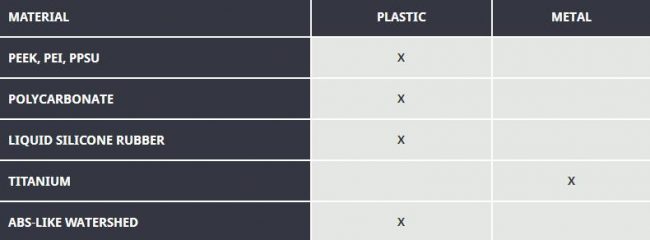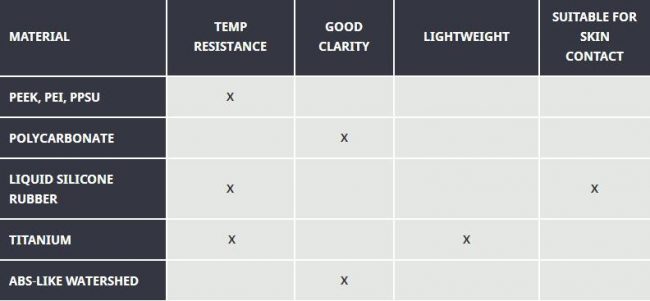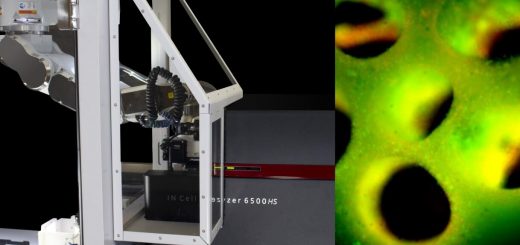PEEK, PEI, LSR, and Other Material Options for Medical Prototyping
Developing parts for the medical device industry is a high-stakes process, and material choice is an important decision to make at the outset of the project. Five strong contenders include PEEK, PEI (Ultem), and PPSU; polycarbonates; medical-grade liquid silicone rubber (LSR); and 3D-printed titanium and ABS-like WaterShed XC 11122. The specific requirements for the part or device being developed will help steer the decision on which material option is the best choice.

Medical-grade LSR can be used for the full component, or in overmolding, such as on this blood collection device made from polypropylene with a thermoplastic elastomer overmold.
![]() Comparing Manufacturing Processes
Comparing Manufacturing Processes
In an industry where speed to market is key, quick-turn injection molding is an excellent option. It can produce parts made from plastic, metal, and liquid silicone rubber quickly, in a method that provides repeatable, reliable, and consistent parts. The disadvantage of this method comes with the upfront tooling cost, and the risk of needing changes to the design after investing in a mold. This risk can be mitigated using low-cost aluminum tooling instead of a more expensive steel mold. Defects such as flash, parting lines, gate marks, and ejector pin marks are also possible with molded parts.
For complex geometries not possible through injection molding, industrial-grade 3D printing is a viable option. 3D printing allows a way to quickly evaluate designs at a low cost. The piece part price is higher than injection molding, but without the upfront tooling cost, design changes are easy to make. The biggest advantage of 3D printing is the accuracy of form and fit testing. Medical device developers often use this process during prototyping to identify any design flaws and make changes before moving to second-generation machined or molded parts.
CNC machining plays a big role in the early and end-of-life medical device stages because it supplies products quickly and relatively inexpensively, without the tooling cost of molding or high piece part price of 3D printing. The process decision will help guide the material decision, as certain materials are only available in specific processes.
![]() Deciding Material Type
Deciding Material Type
Material type is an important consideration as well. The material type required for the project will guide the material choice, as metal and plastic have different material properties. When deciding on the material, it is important to keep regular availability in mind. Choosing a material that will be discontinued or hard to source during the product’s life cycle will require re-testing and going through the timely testing and FDA certification process again with a new material.

![]() Advantages and Disadvantages
Advantages and Disadvantages
The most important comparison in medical materials is to consider the advantages and disadvantages of each material. For designs where high temperature resistance is key, PEEK/PEI/PPSU, LSR, and titanium are all good options. PEEK/PEI/PPSU also provide creep resistance and work well for applications requiring sterilization. LSR provides electrical and chemical resistance, biocompatibility, and is the only material on our list that is suitable for skin contact. If lightweight and corrosion resistance are key, Titanium is going to be the best option for the project.
Polycarbonates such as Makrolon and LEXAN HP1 provide good clarity in addition to good impact resistance and durability. If you’ve chosen 3D printing as the ideal process for your application, WaterShed XC 11122 is a good option when clarity is required, such as in microfluidics, and is also water and humidity resistant.

Source: PROTOLABS




Recent Comments